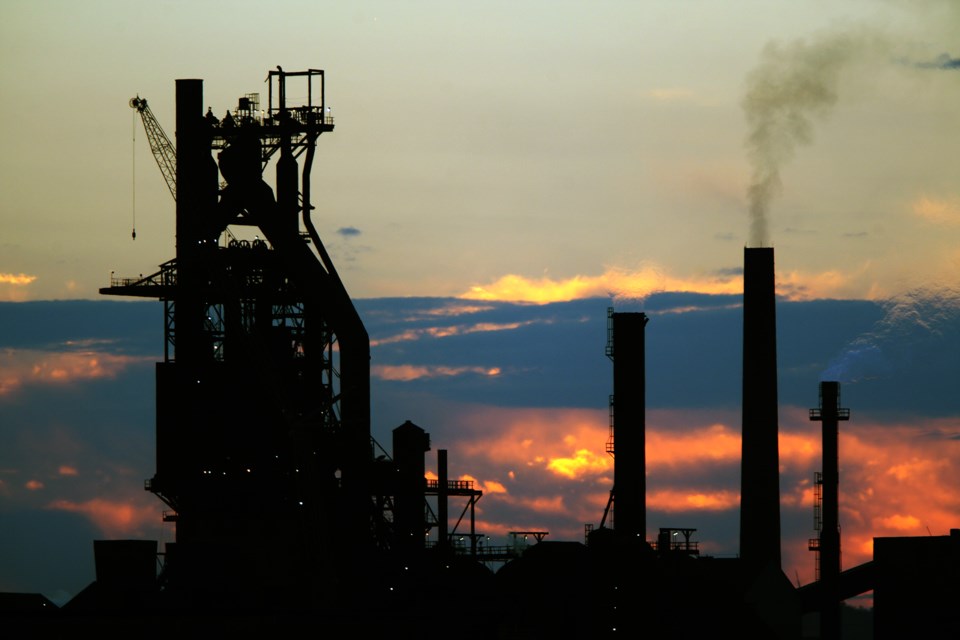The deadline for comments on Algoma Steel's bid for new air and noise emissions standards is one minute before the stroke of midnight tonight (Monday Nov. 4).
A group of environmental justice lawyers isn't remotely happy about that.
As SooToday reported last week, the Sault steelmaker is applying to the Ontario government for new site-specific standards for noise and air pollution.
The new standards will apply until Algoma completes its transition to electric arc furnace steelmaking, which is expected to take until 2029.
But the Canadian Environmental Law Association (CELA), an environmental justice clinic funded by Legal Aid Ontario, is crying foul.
It says the province is asking for comments before nearly enough information has been provided to allow meaningful public response.
In its own comments submitted on Friday, CELA asked the province to make no decision on a new site-wide environmental compliance approval until it has released all supporting documents to the public and allowed more time for discussion.
Furthermore, CELA wants a draft of the proposed environmental compliance approval to be made available for public review before it's issued.
"Algoma Steel has... applied for site-specific standards for benzene, benzo(a)pyrene, total suspended particulate matter and sulphur dioxide," the lawyers say.
"We note that the requested site-specific standards are well above provincial standards and a detailed assessment of the impacts on human health and the environment should be completed."
How much above provincial standards?
Here's what CELA says about those four pollutants:
- benzo(a)pyrene is classified by Health Canada as a human carcinogen and by the International Agency for Research on Cancer as carcinogenic to humans. Algoma Steel’s requested standard is 53,000 per cent of the provincial standard. The current provincial standard for benzo(a)pyrene is 0.00001 µg/m³ (annual). The company has now requested a new site-specific standard for benzo(a)pyrene of 0.0053 ug/m3 (annual)
-
benzene is classified as genotoxic and a human carcinogen by Health Canada and carcinogenic to humans by the International Agency for Research on Cancer. Algoma Steel’s requested new site-specific standard for benzene is 884 per cent of the provincial standard
-
Algoma Steel's requested standard for total suspended particulate matter is 112.5 per cent of the provincial standard
-
Algoma Steel’s requested site specific standard for sulphur dioxide is 340 per cent of the provincial standard
"We are hopeful that the transition to electric arc furnaces will significantly decrease both greenhouse gas and local air pollutant emissions," the CELA lawyers say.
"Algoma Steel’s operations currently cause a significant amount of air pollution in Sault Ste. Marie, which disproportionately impacts the lower-income communities living near the facility.
"It's critical that the impacts of these air emissions are considered during the current and transition periods and that measures are taken to protect human health and the environment.
"These measures are also necessary from a standpoint of environmental justice, which requires that decisions about significant environmental proposals prioritize input from the impacted communities and consider
the health impacts on communities disproportionately impacted by pollution," CELA said in its comments to the province.
If you're reading this before 11:59 p.m. on Monday and wish to comment on Algoma Steel's plans, please click here.
Algoma Steel issued the following statement in response to CELA's filing:
Algoma Steel has applied for a site-specific air permit to address the phased shutdown of blast furnace and coke operations as we shift to electric arc furnace (EAF) steelmaking. Once fully transitioned to EAF, we expect to comply with the provincial Regulation 419 through the industry technical standard for EAF steelmaking.
Our $875-million EAF investment is a generational commitment to sustainable steelmaking in Sault Ste. Marie, and will position Algoma among the lowest carbon-intensive steel producers in North America.
